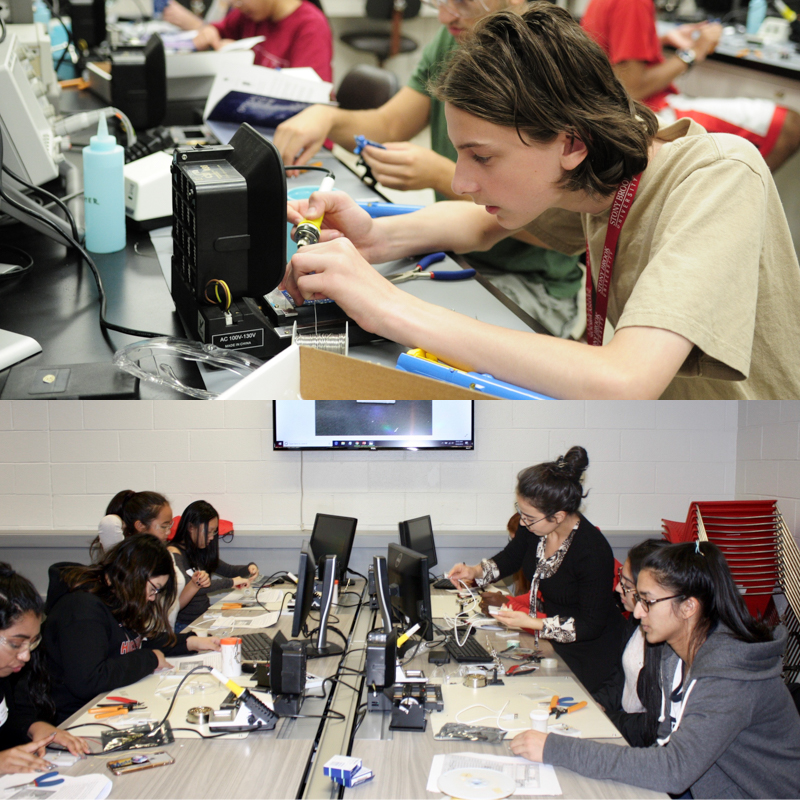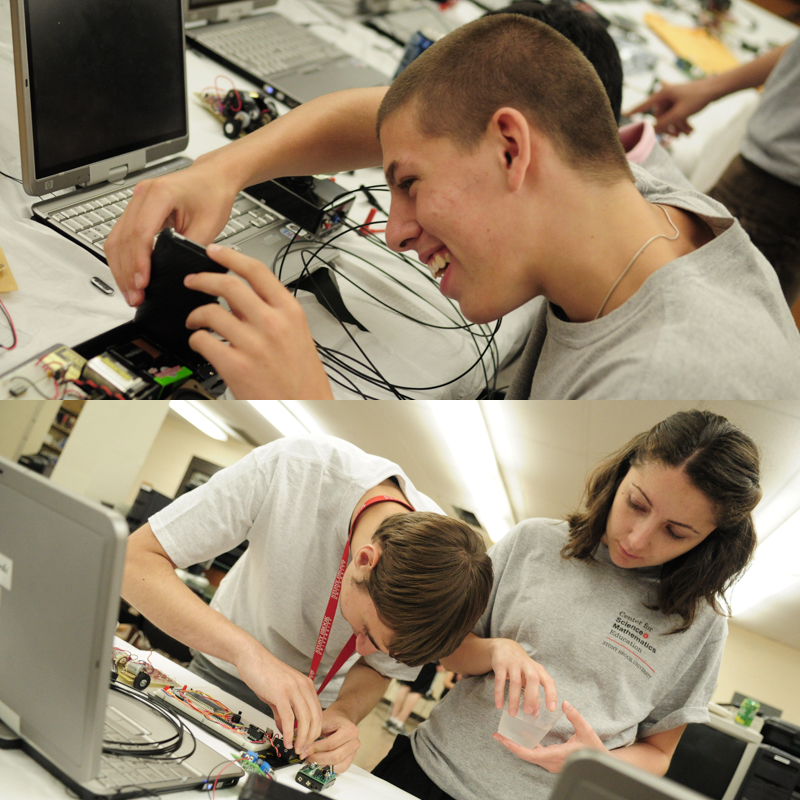Engineering Programs for High School Students
Register your class for a hands-on engineering experience, utilizing programming, math, and scientific tools.


Engineering Summer Camp for High Schoolers
Python Boot Camp
Activities are aligned to the following NYSSLS Performance Expectations:
NY HS-PS3-3: Energy Conversion Device Design
Design, build, and refine a device that works within given constraints to convert
one form of energy into another form of energy.*
NY HS-PS3-6: Ohm's Law
Analyze data to support the claim that Ohm’s Law describes the mathematical relationship
among the potential difference, current, and resistance of an electric circuit.
NY HS-PS4-2: Digital Transmission and Storage of Information
Evaluate questions about the advantages of using a digital transmission and storage
of information.
NY HS-PS4-5: Waves and Information Technology
Communicate technical information about how some technological devices use the principles
of wave behavior and wave interactions with matter to transmit and capture information
and energy.*
NY HS-ETS1-2: Engineering Design
Design a solution to a complex real-world problem by breaking it down into smaller,
more manageable problems that can be solved through engineering.
NY HS-ETS1-3: Engineering Design
Evaluate a solution to a complex real-world problem based on prioritized criteria
and trade-offs that account for a range of constraints, including cost, safety, reliability,
and aesthetics, as well as possible social, cultural, and environmental impacts.
To schedule your class or for more information, please e-mail: kathleen.dinota@stonybrook.edu
| Activity | Cross-Cutting Concepts | |
|---|---|---|
 |
Programmable Smart Night Light Create and program a smart night light with four functions. |
Energy and matter, patterns, scale, proportion, and quantity. |
 |
Optical Intrusion Detection Design and create an electronic detection system with an alarm and a memory. |
Energy and matter, scale, proportion, and quantity. |
 |
Traffic Light Design and create a switched traffic light for road intersection mockup with light emitting diode and programmable controller. Next, turn a traffic light into a game board. |
Patterns, cause and effect, energy and matter, scale, proportion, and quantity. |
 |
Temperature and Conductivity Sensor Create a portable sensor that can measure temperature and conductivity. Ideal project for Chemistry and Environmental Science classes. |
Energy and matter, systems and system models. |
The Design and Create Labs are available Monday through Friday. A lab activity can begin as early as 8am. All activities are 4–5 hours long (including break for lunch). Projects can also be conducted remotely or as a hybrid of remote and in-person work.
The maximum capacity of the lab is 40 students and transportation must be provided by the district.
Lab Director: Dr. Mónica Bugallo, College of Engineering and Applied Sciences


